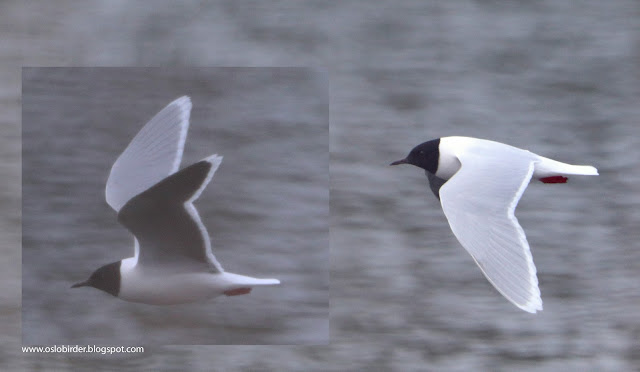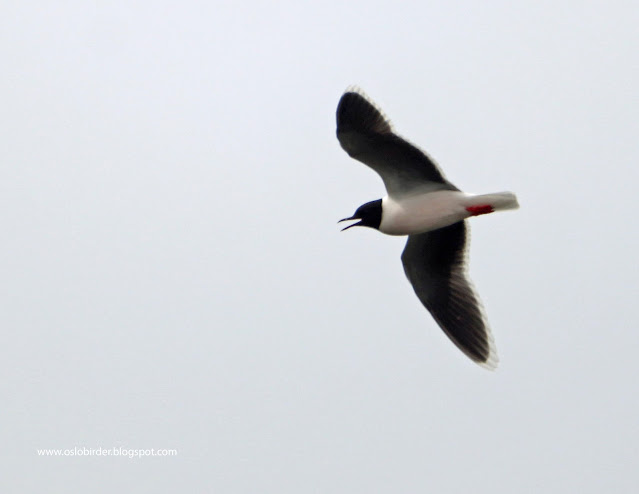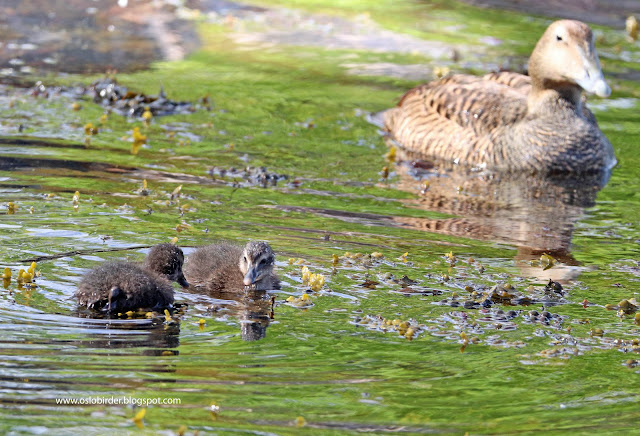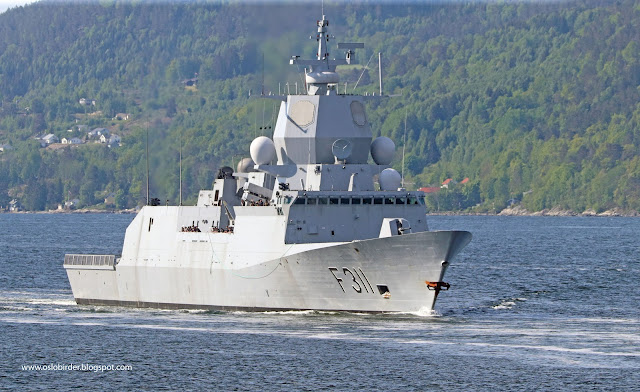It is very hot and sunny at the moment and the
fields are getting very dry in Maridalen which will be a test for the Lapwings.
Yesterday I saw a brood of 4 to the west of the road where the previous day I
saw just one. As I saw no others in that area I am assuming that I just missed
3 young previously although maybe they were a new brood as I thought the single
youngster I saw was a bit bigger. Otherwise the two females are still sitting
and I saw what was probably another female in the long grass but still do not know
what has become of the other birds.
It is an above average year for Wrynecks in Maridalen
with I believe 2 pairs and a single male but other Woodpeckers seem to be
having a very poor year. I have only had one sighting of a pair of Three-toed
and haven’t located a nest, I have just had two sightings of Green Woodpecker
all year (would normally be 3-4 pairs) and know of only 1 Black Woodpecker
nest. Even Great Spotted seem scarce than usual. It is still early for
Red-backed Shrikes but 2 pairs is promising. Yesterday I watched one pair
whilst a Wryneck sang in the background which for an English birder is a pretty
unforgettable experience.
I have finally added Common Rosefinch to my year
list but had to travel to Sørkedalen where a red male showed very well. It is
still a but early but it is my definite impression that this year continues last
years negative trend for this species. Being unfaithful to Maridalen also allowed me to hear a Cuckoo😊
A Hobby pair has now shown up in Maridalen and
yesterday I saw and heard them briefly harassing a pair of nesting Hooded Crows
in what I interpreted as an attempt to take over the crow’s nest.
 |
| old male Common Rosefinch (rosenfink) |
 |
| Hobby (lerkefalk) |
 |
| a well camoflagued (and badly photographed) Icterine Warbler (gulsanger) |
 |
| pair of Red-backed Shrikes (tornskate) |
 |
| and a glimpse of the Wryneck (vendehals) that was singing behind them |
 |
| Jays (nøtteskrike) are now visiting marshy areas searching for emerging dragonfly larvae although there are not yet many for them to find and I did not see this one make a catch |
 |
| Grizzled Skipper (bakkesmyger) |
 |
| Pearl-bordered Fritillary (rødflekket perlemorvinge) |























































